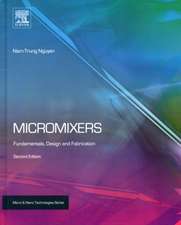Historic Mortars: Advances in Research and Practical Conservation
Editat de John J. Hughes, Jan Válek, Caspar J. W. P. Grooten Limba Engleză Hardback – 18 iul 2018
| Toate formatele și edițiile | Preț | Express |
|---|---|---|
| Paperback (2) | 946.87 lei 6-8 săpt. | |
| Springer International Publishing – 22 dec 2018 | 946.87 lei 6-8 săpt. | |
| SPRINGER NETHERLANDS – 23 aug 2016 | 1050.38 lei 39-44 zile | |
| Hardback (2) | 953.03 lei 6-8 săpt. | |
| Springer International Publishing – 18 iul 2018 | 953.03 lei 6-8 săpt. | |
| SPRINGER NETHERLANDS – 24 iun 2012 | 1231.64 lei 6-8 săpt. |
Preț: 953.03 lei
Preț vechi: 1162.23 lei
-18% Nou
Puncte Express: 1430
Preț estimativ în valută:
182.36€ • 190.03$ • 150.100£
182.36€ • 190.03$ • 150.100£
Carte tipărită la comandă
Livrare economică 03-17 aprilie
Preluare comenzi: 021 569.72.76
Specificații
ISBN-13: 9783319916040
ISBN-10: 3319916041
Pagini: 261
Ilustrații: IX, 336 p. 163 illus.
Dimensiuni: 155 x 235 mm
Greutate: 0.66 kg
Ediția:1st ed. 2019
Editura: Springer International Publishing
Colecția Springer
Locul publicării:Cham, Switzerland
ISBN-10: 3319916041
Pagini: 261
Ilustrații: IX, 336 p. 163 illus.
Dimensiuni: 155 x 235 mm
Greutate: 0.66 kg
Ediția:1st ed. 2019
Editura: Springer International Publishing
Colecția Springer
Locul publicării:Cham, Switzerland
Cuprins
Characterisation of historic materials.- How to identify a natural cement: case study of the Vassy Church, France, by M. Bouichou, E. Marie-Victoire, A.Texier and T. Blondiaux.- Methods of microscopy to identify and characterise hydraulic binders in historic mortars – a methodological approach, by J. Weber, T. Köberle and F. Pintér.- Composition and application of cimorné finish: an interwar cement render decorated with coloured opalescent glass granules, by Liesbeth Dekeyser, Laurent Fontaine, Ann Verdonck and Hilde De Clercq.- Historic renders and their weathering at the temple Wat Mahathat, UNESCO World Heritage Site of Ayutthaya, Thailand, by H. Siedel, E. Wendler and B. Ullrich.- From dry-stone to shell-lime bound: High Medieval contrasts in masonry technique at Skellig Michael, High Island and North Rona, by M. Thacker.- Medieval Mortars and the Gothic Revival: The Cosmati Pavement at Westminster Abbey, by Ruth Siddall.- Terranova, a popular stone imitation cladding: Strategies and techniques for restoration, by Yves Govaerts, Ann Verdonck, Wendy Meulebroeck and Michael de Bouw.- Characterisation of historic mortars for conservation diagnosis, by P. Hauková, D. Frankeová and Z. Slížková.- Content and topography of salts in historic mortars, by Ioanna Papayianni, Maria Stefanidou, Vasiliki Pachta and Stavroula Konopisi.- New materials’ development for conservation.- Portland cement-lime mortars for conservation, by S. Pavia and O. Brennan.- Choosing mortar compositions for repointing of historic masonry under severe environmental conditions, by Caspar JWP Groot and Jos TM Gunneweg.- High-performance repair mortars for application in severe weathering environments: frost resistance assessment, by D. Křivánková, C. P. Nunes, Z. Slížková, D. Frankeová, K. Niedoba.- Compatibility assessment for repair mortars: an optimized cement-based mix for Tuffeau de Lincent, by A. Isebaert, L. Van Parys, V. Cnudde, T. De Kock and J.M. Baele.- Natural hydraulic lime mortars: influence of the aggregates, by P. Faria and V. Silva.- The influence of calcitic filler in hydraulic lime mortars for use in high temperature & high humidity climatic conditions: A preliminary investigation, by Alan M Forster, Nadia Razali, Phil Banfill, Ewan Szadurski and Clare Torney.- Viability of ceramic residues in lime-based mortars, by G.Matias, P. Faria and I.Torres.- Effects of various chemical agents on mechanical characteristics of weak lime mortar, by Z. Slížková, M. Drdácký.- Artisanal lime coatings and their influence on moisture transport during drying, by T. Diaz Gonçalves and V. Brito.- Historic Contexts and Experimental Developments.- The development of binders and mortars in Sweden, by J.E. Lindqvist and S. Johansson.- Development of a small-scale lime kiln and experimental assessment of the produced quicklime, by J. Válek, O. Skružná, V. Petráňová, D. Frankeová and J. Jiroušek.- Lime burning tradition in a field kiln of the Jämtland model in Sweden, byK. Balksten, C. Persson and J. Eriksson.- The compatibility of earth-based repair mortars with rammed earth substrates, by M. I. Gomes, T. Diaz Gonçalves and P. Faria.- Heat and moisture simulations of repair mortars: benchmark experiments and practical cases in conservation, by Roel Hendrickx and Hilde De Clercq.
Textul de pe ultima copertă
This book presents a state of the art in mortar characterisation, experimentation with and applications of new mortars for conservation and repair of historic buildings. This volume includes the following topics: characterisation of historic mortars (methods, interpretation, application of results), development of new materials for conservation (compatibility, durability, mix designs), the history of mortar technology and fundamental experimental studies of material properties. The papers have been selected from those presented at the 3rd Historic Mortars Conference, held in Glasgow, Scotland, September 11-14th 2013. All the papers here underwent a two stage peer review process, for the conference and again for this volume. In some cases this has resulted in a revision and updating of content.
Caracteristici
State of the art for research into mortars found in archaeology and historic buildings Information can be used for practical applications Includes new advanced characterization techniques











